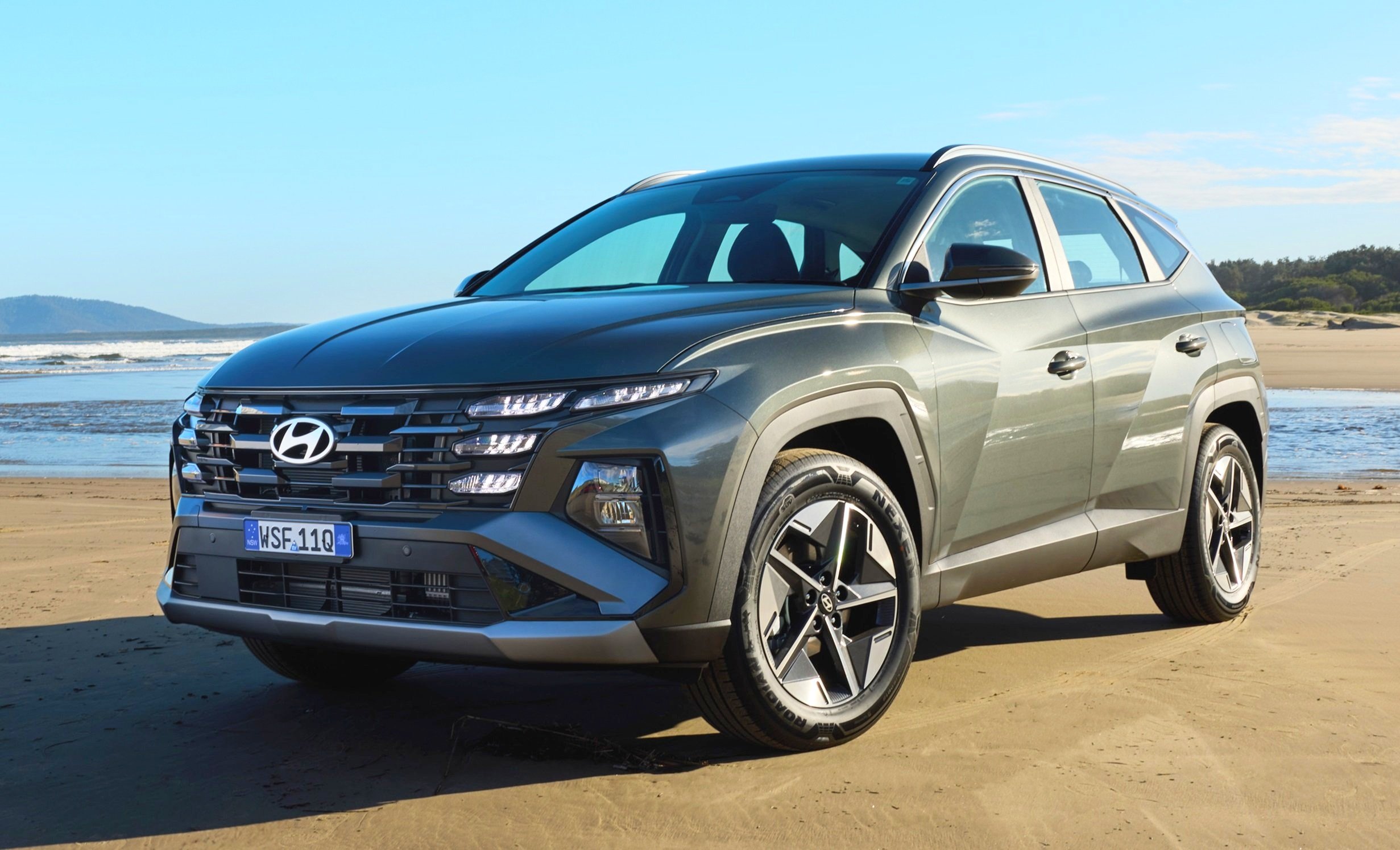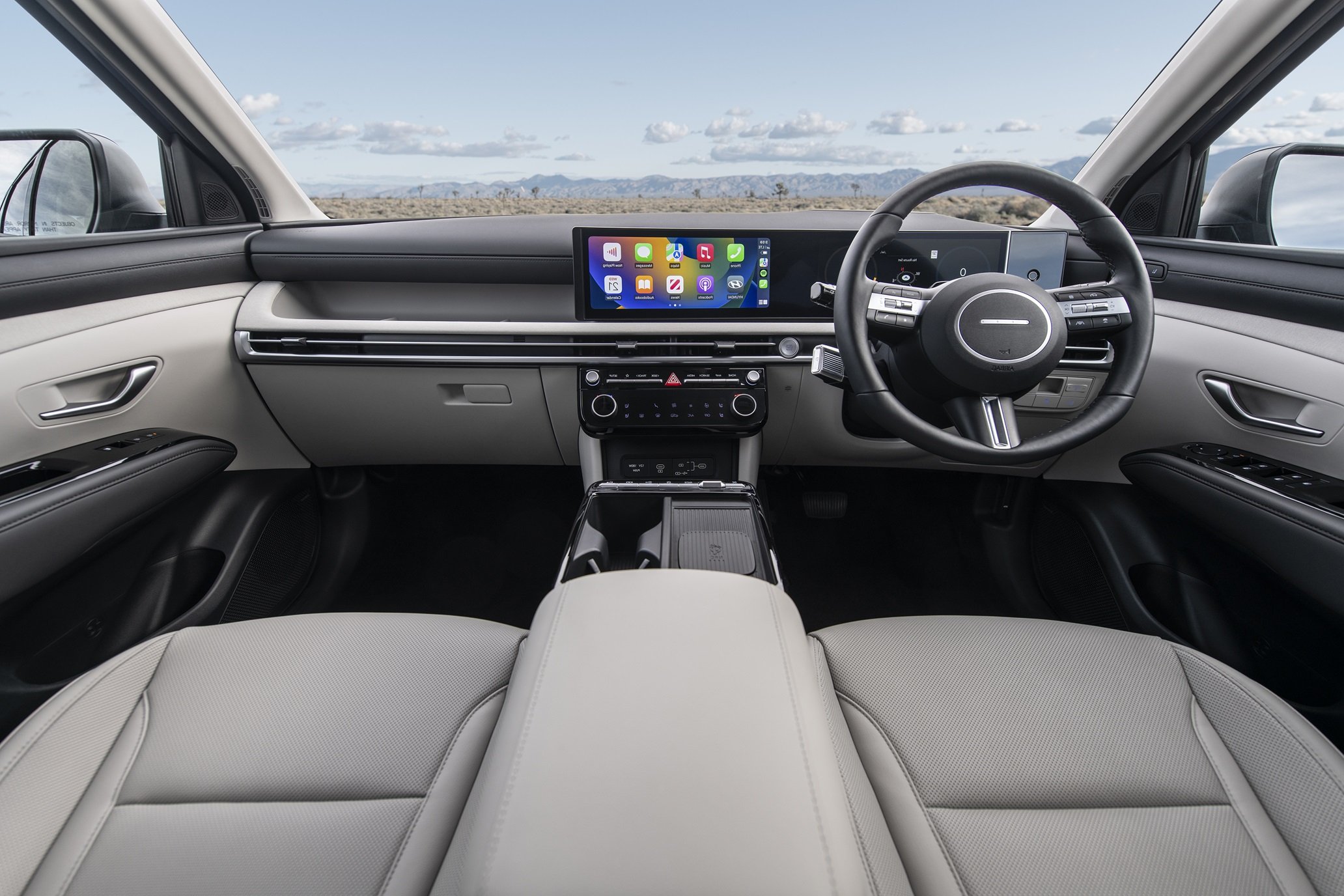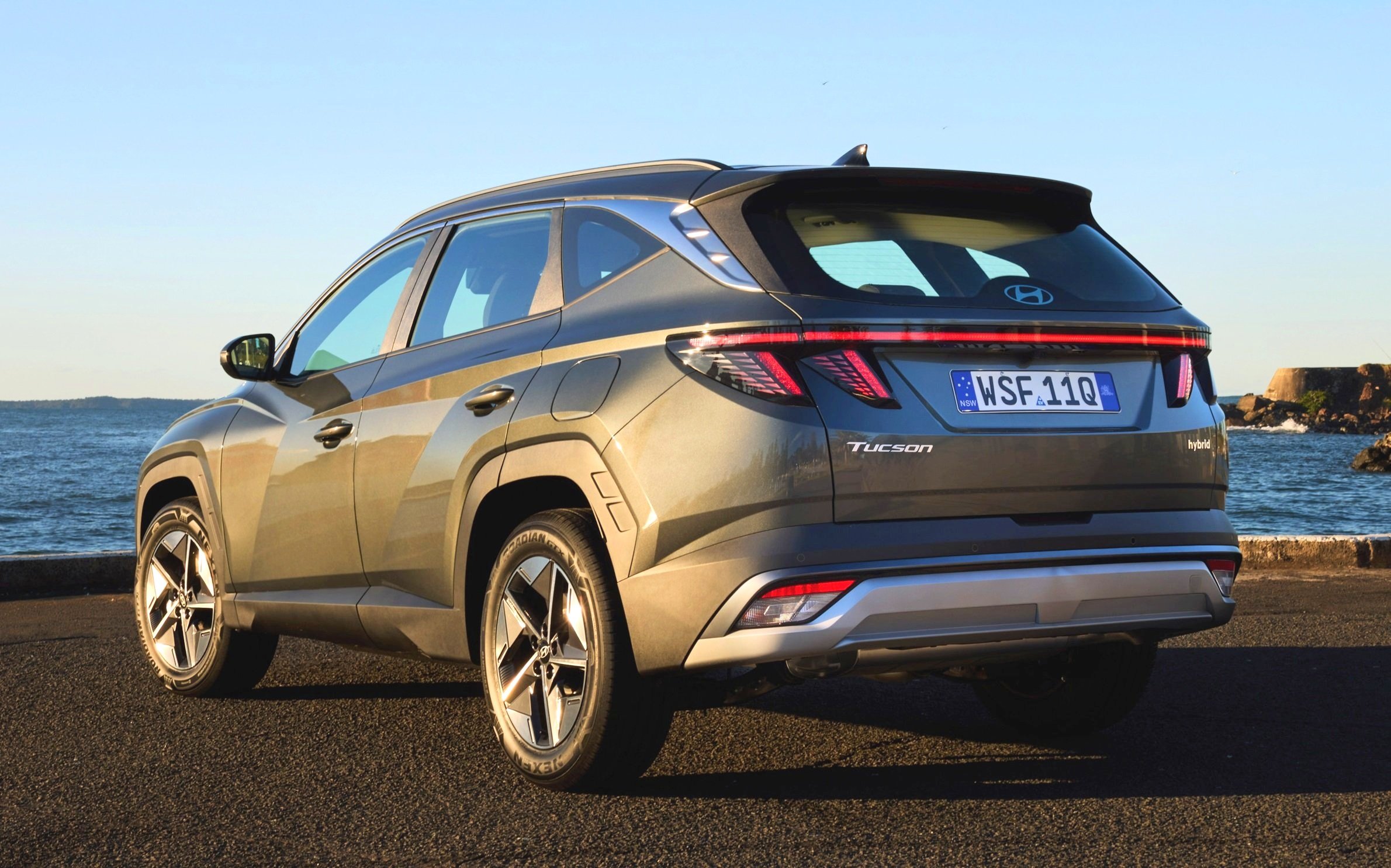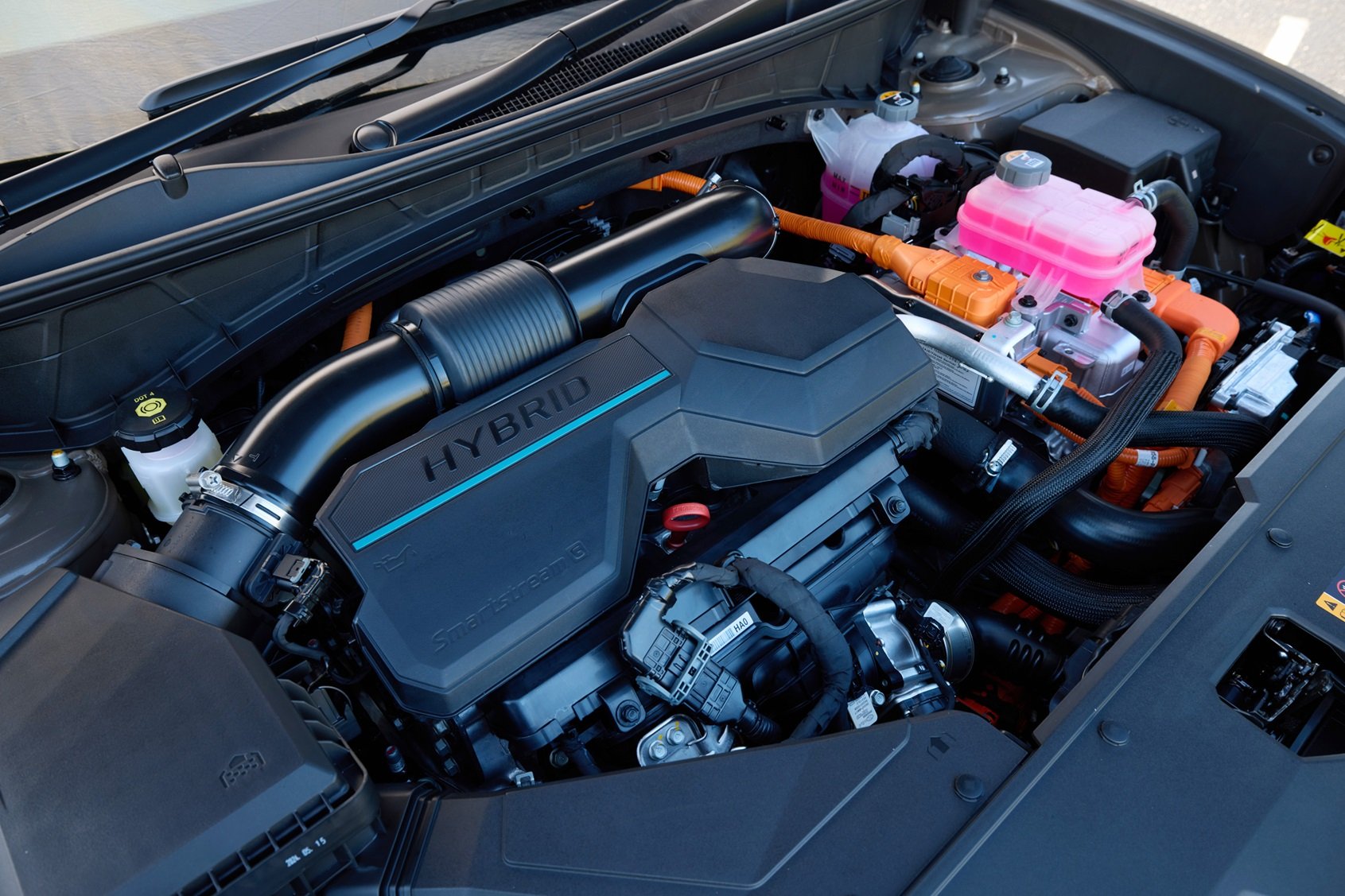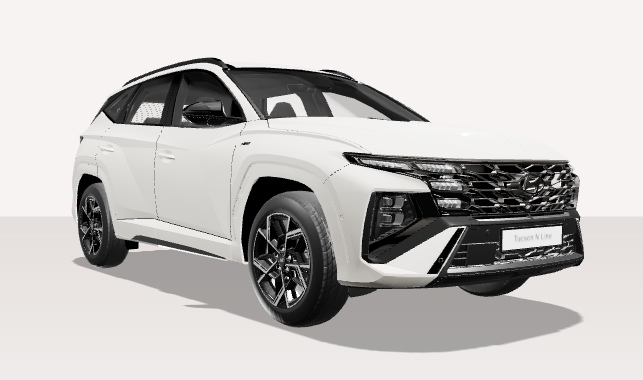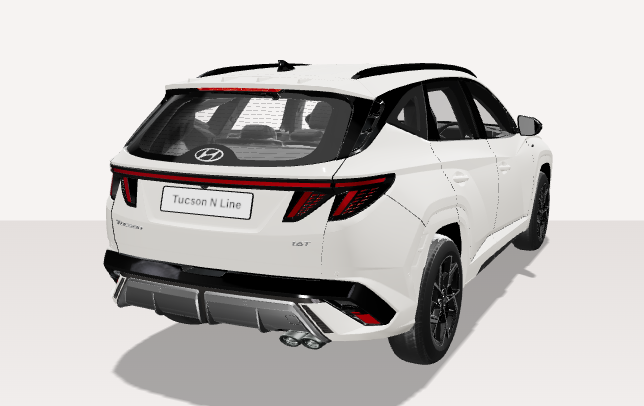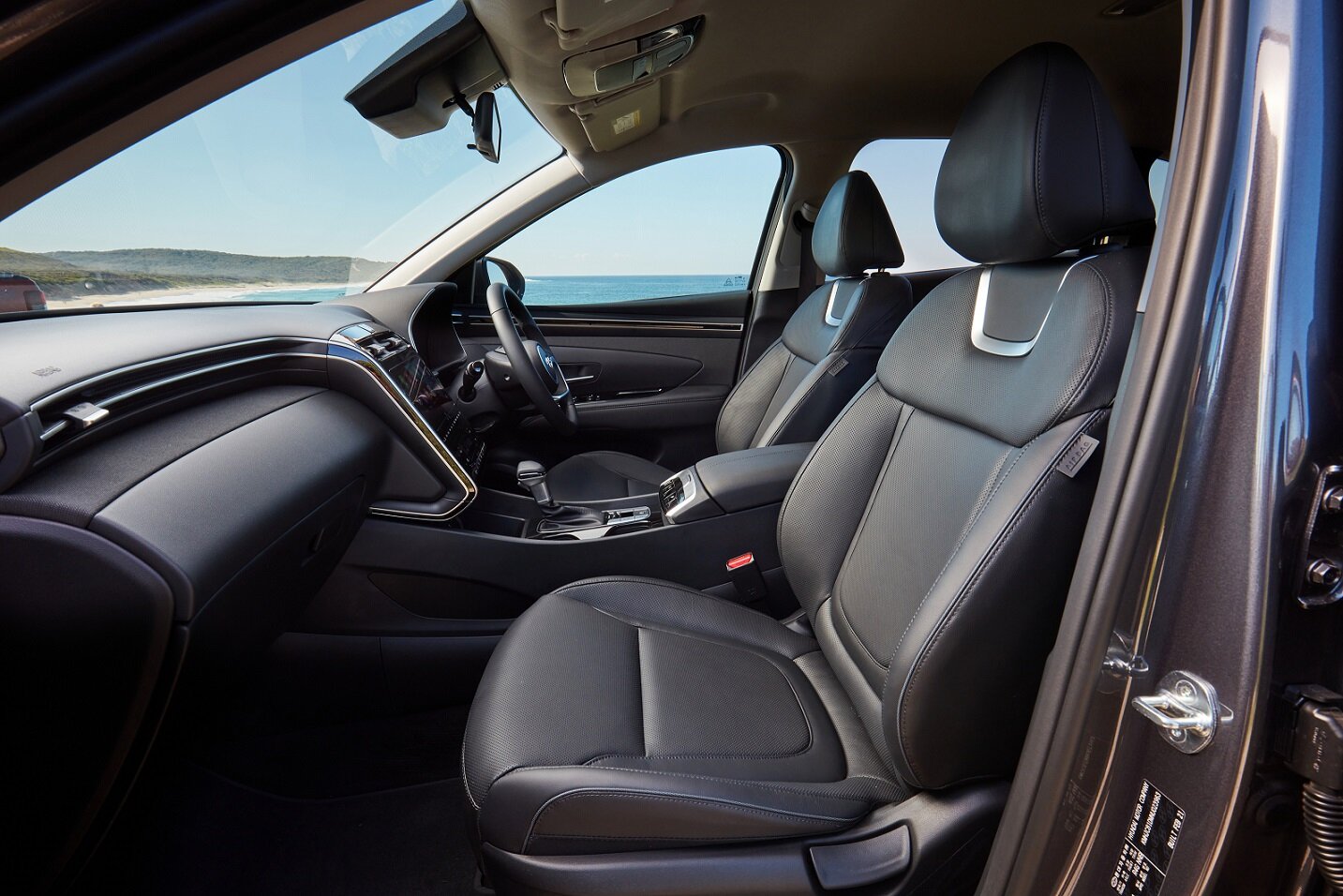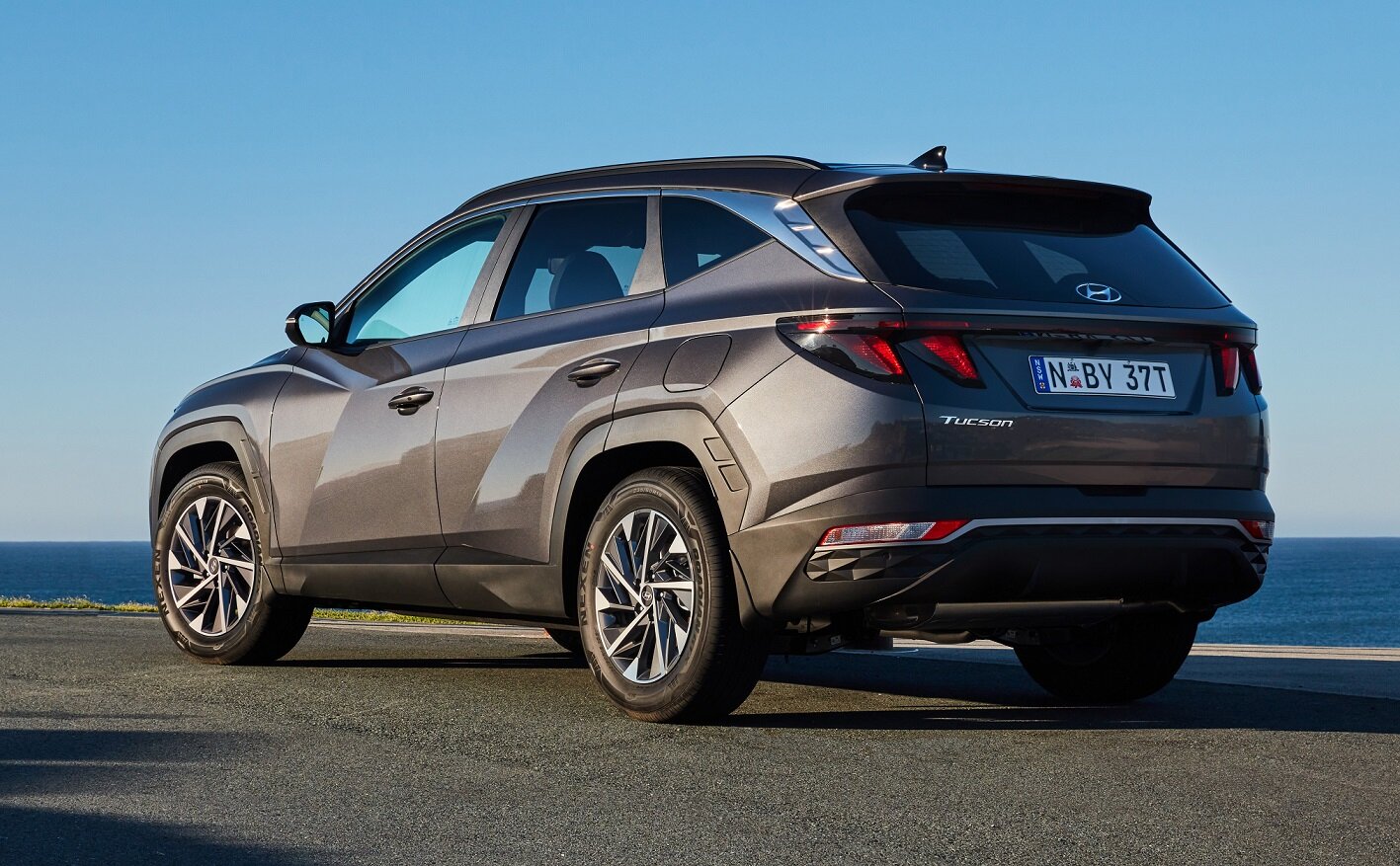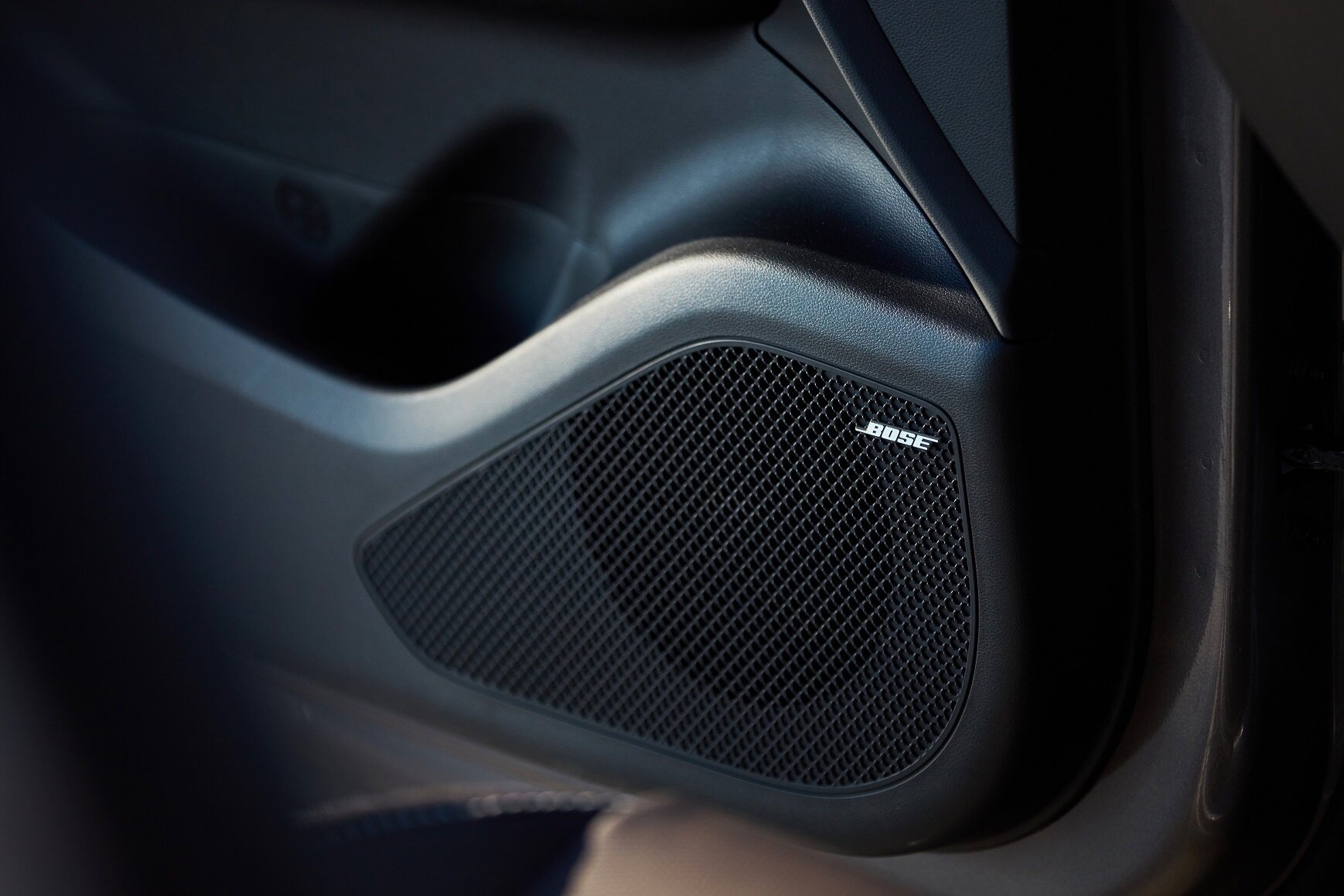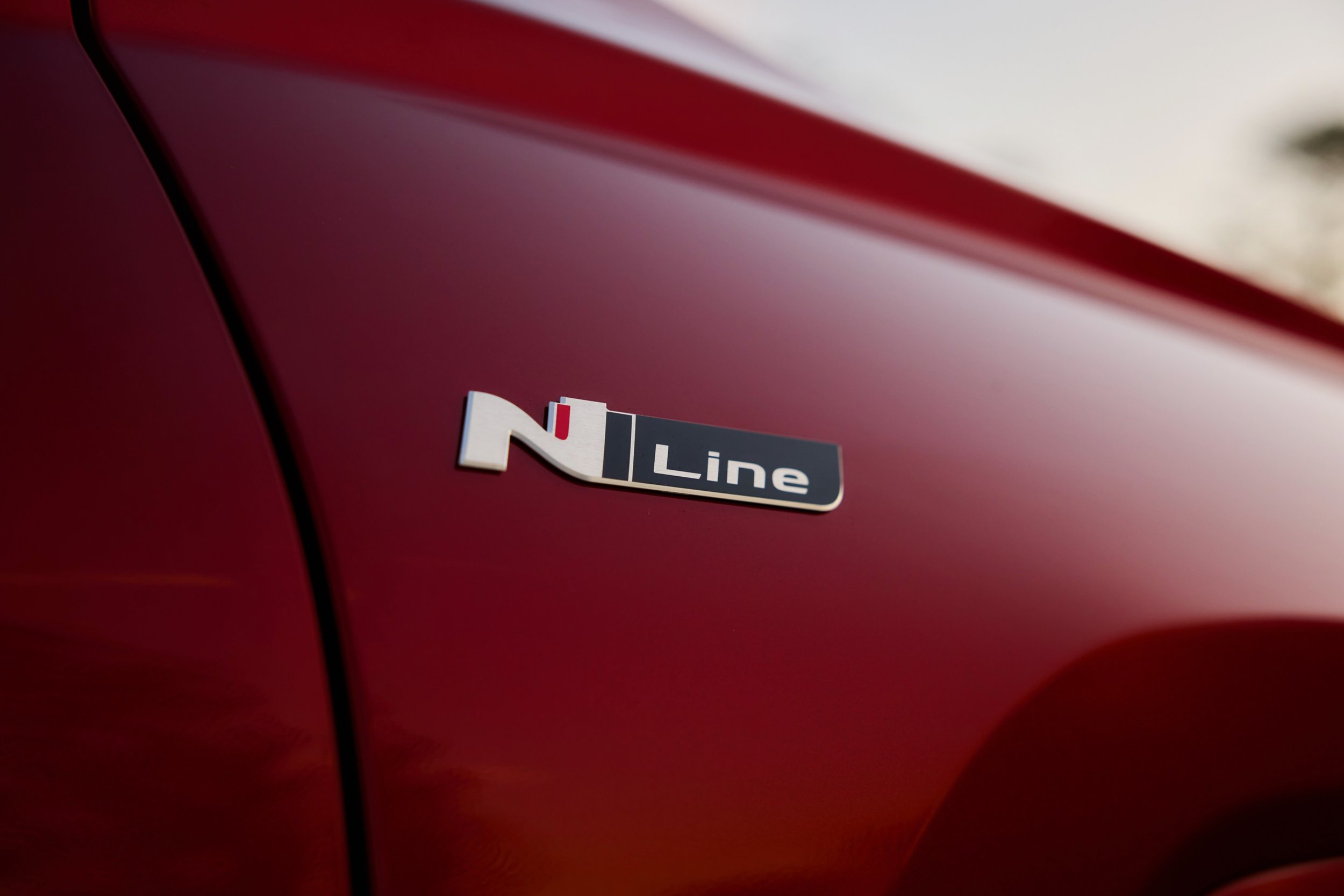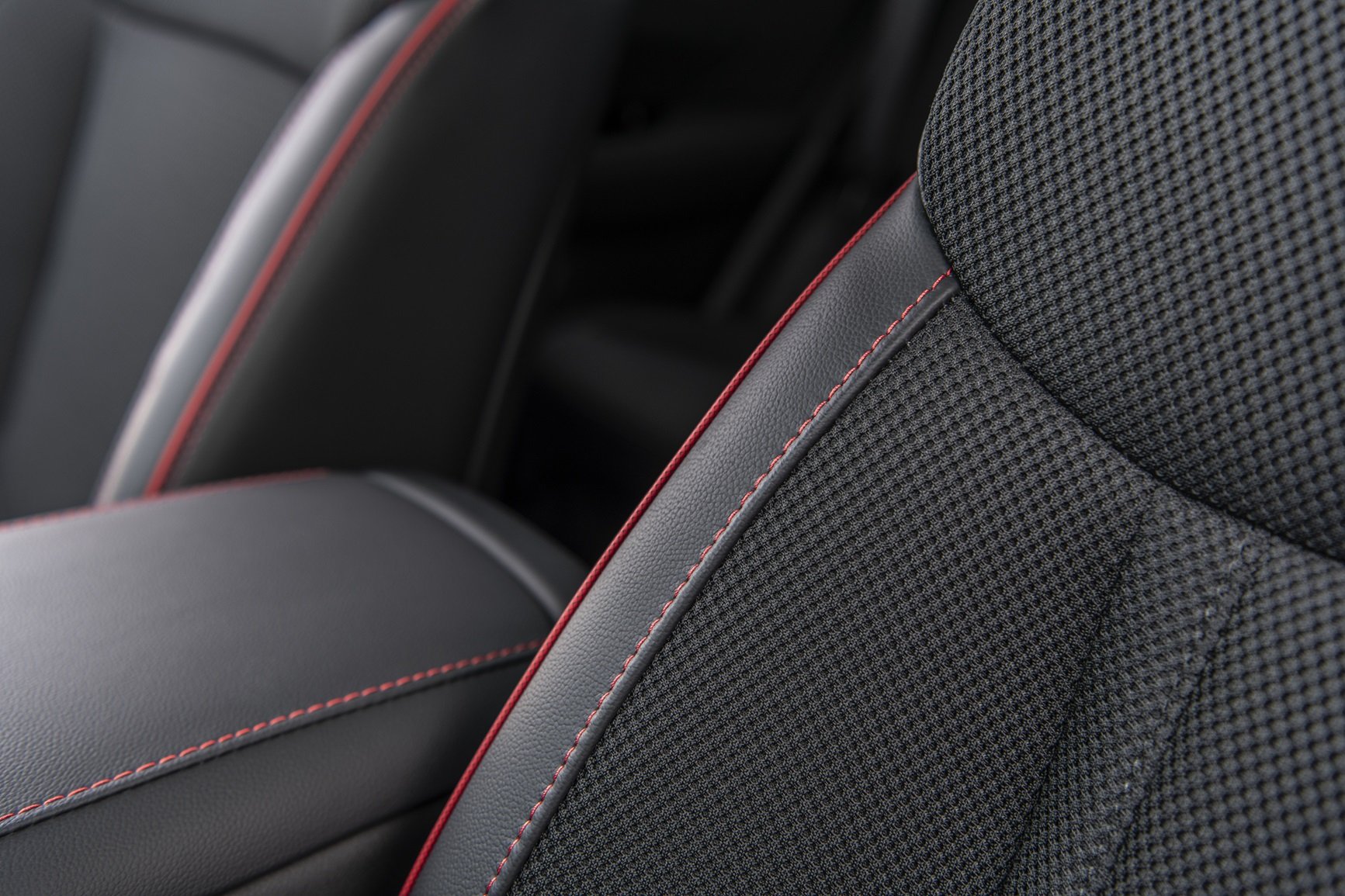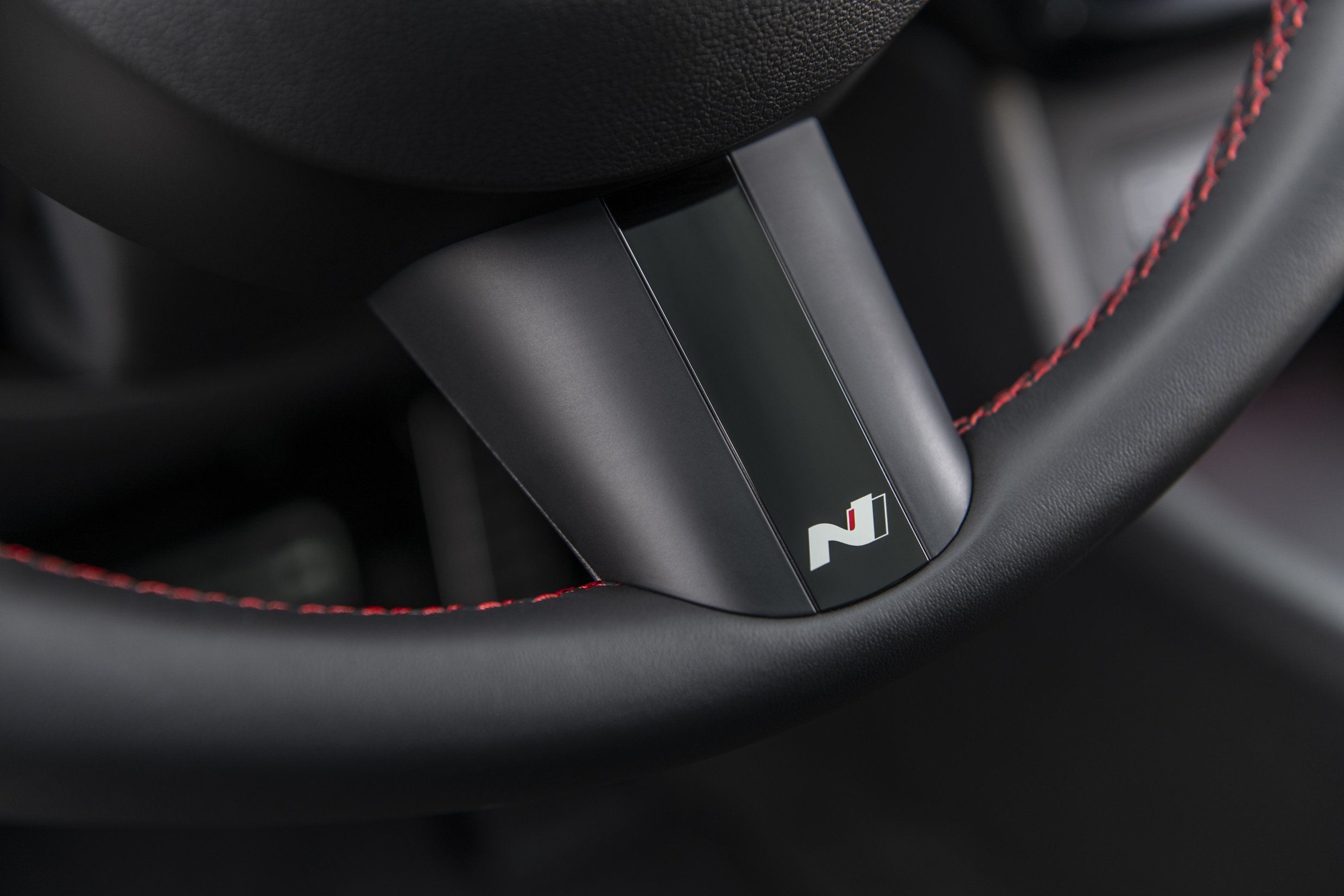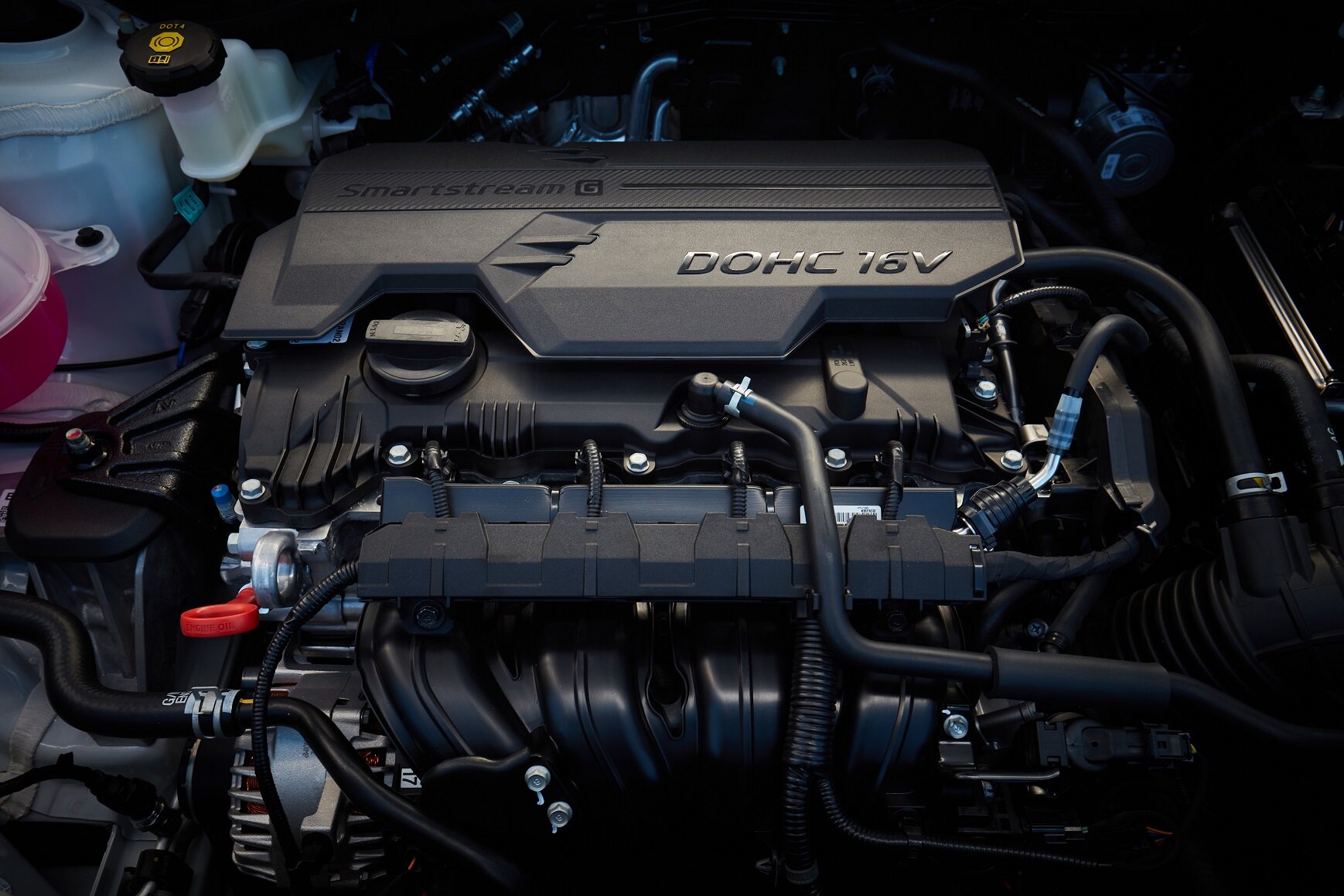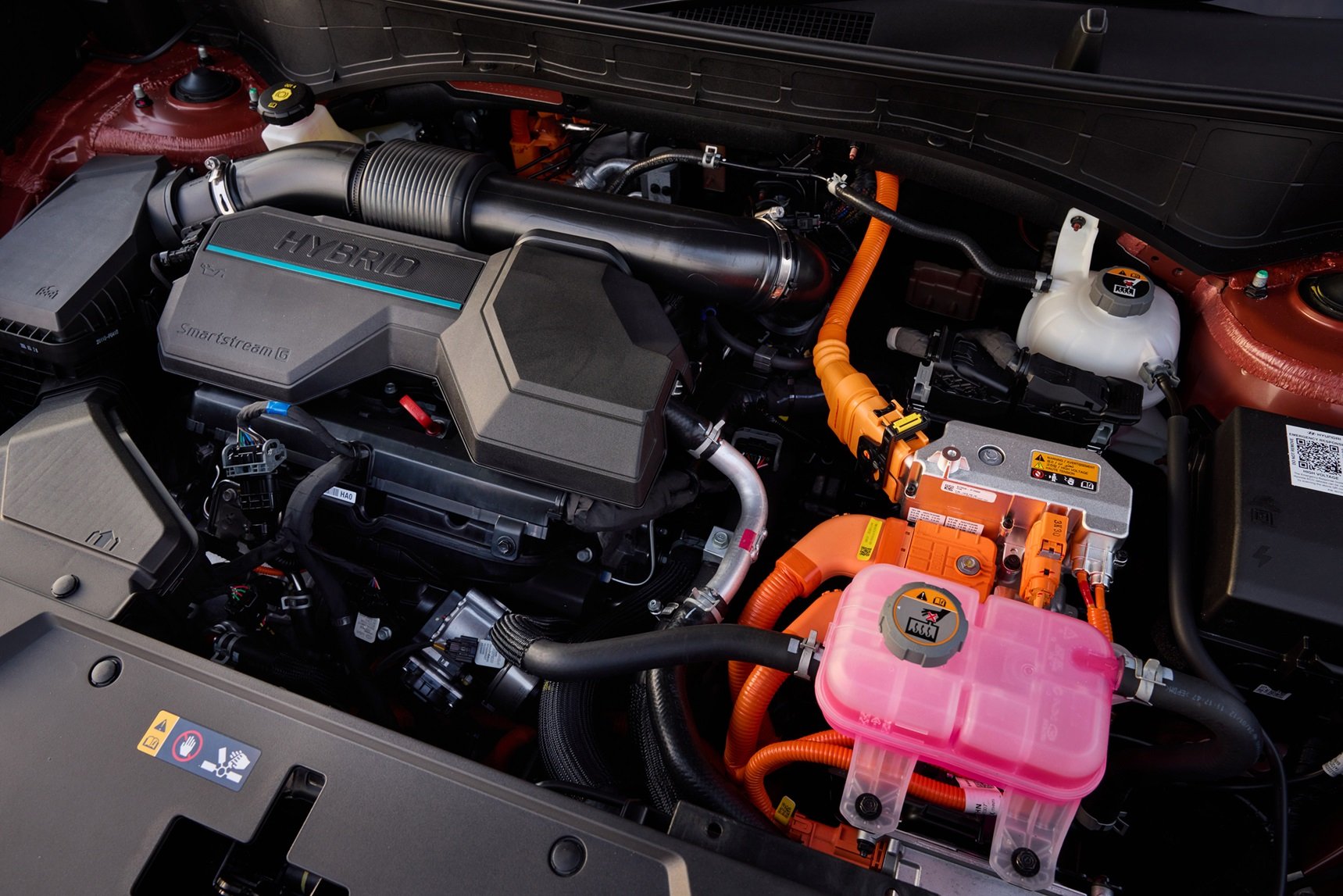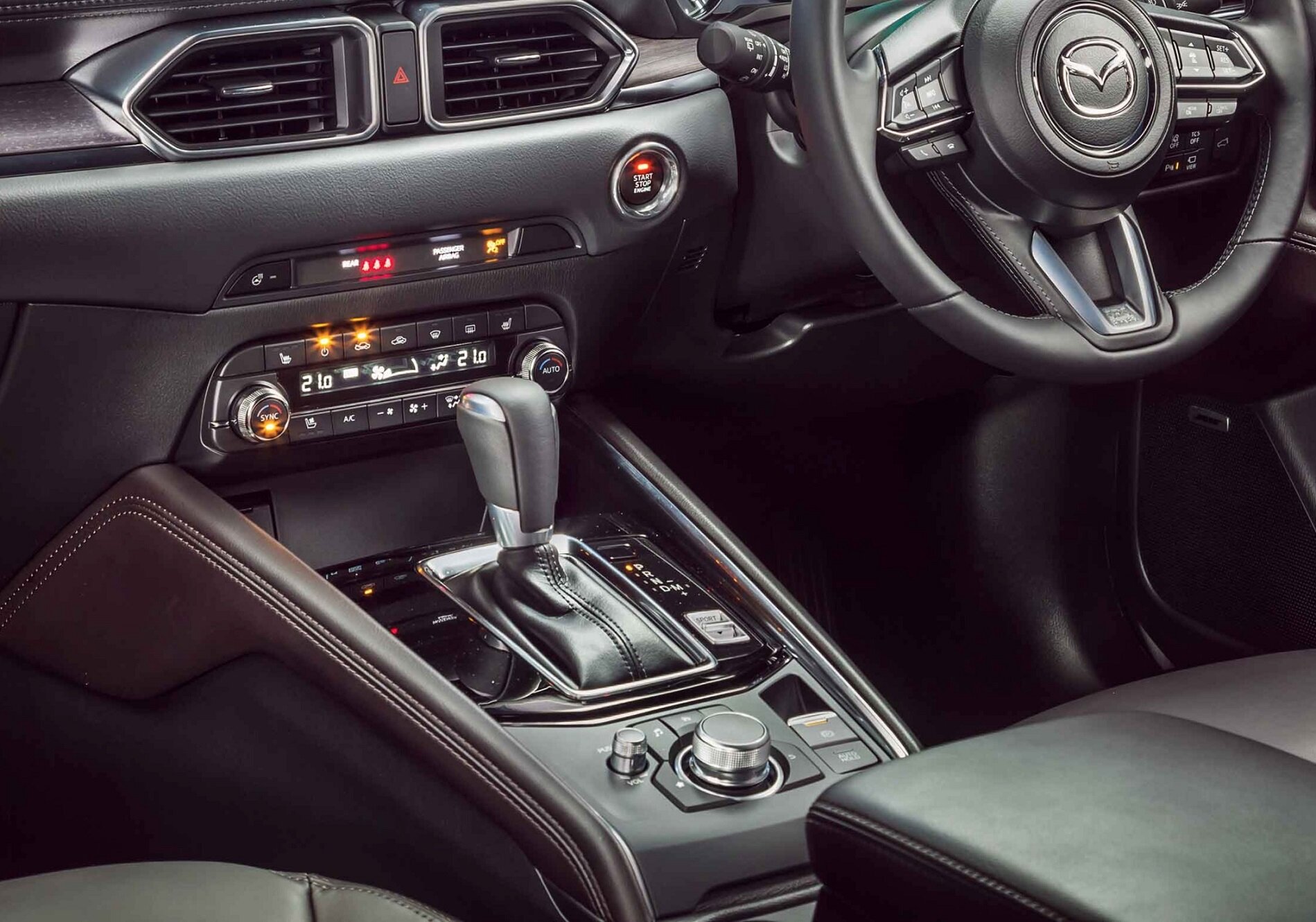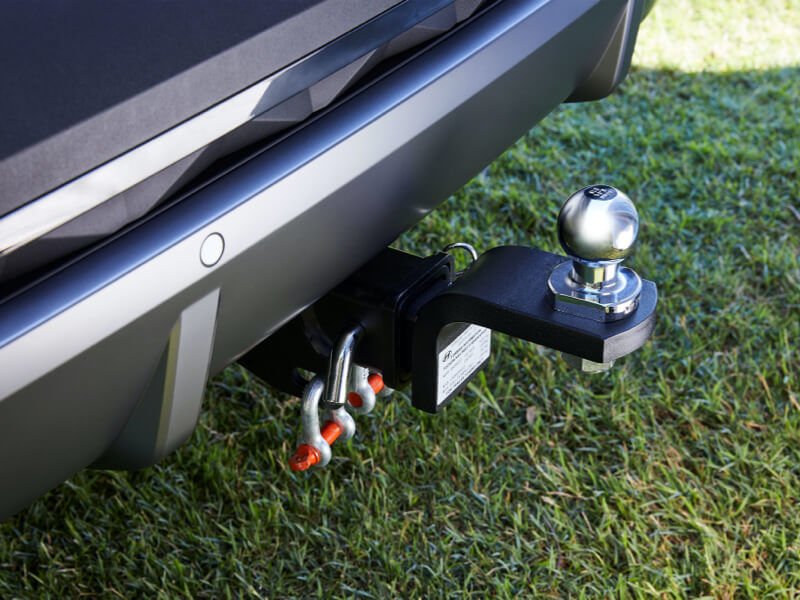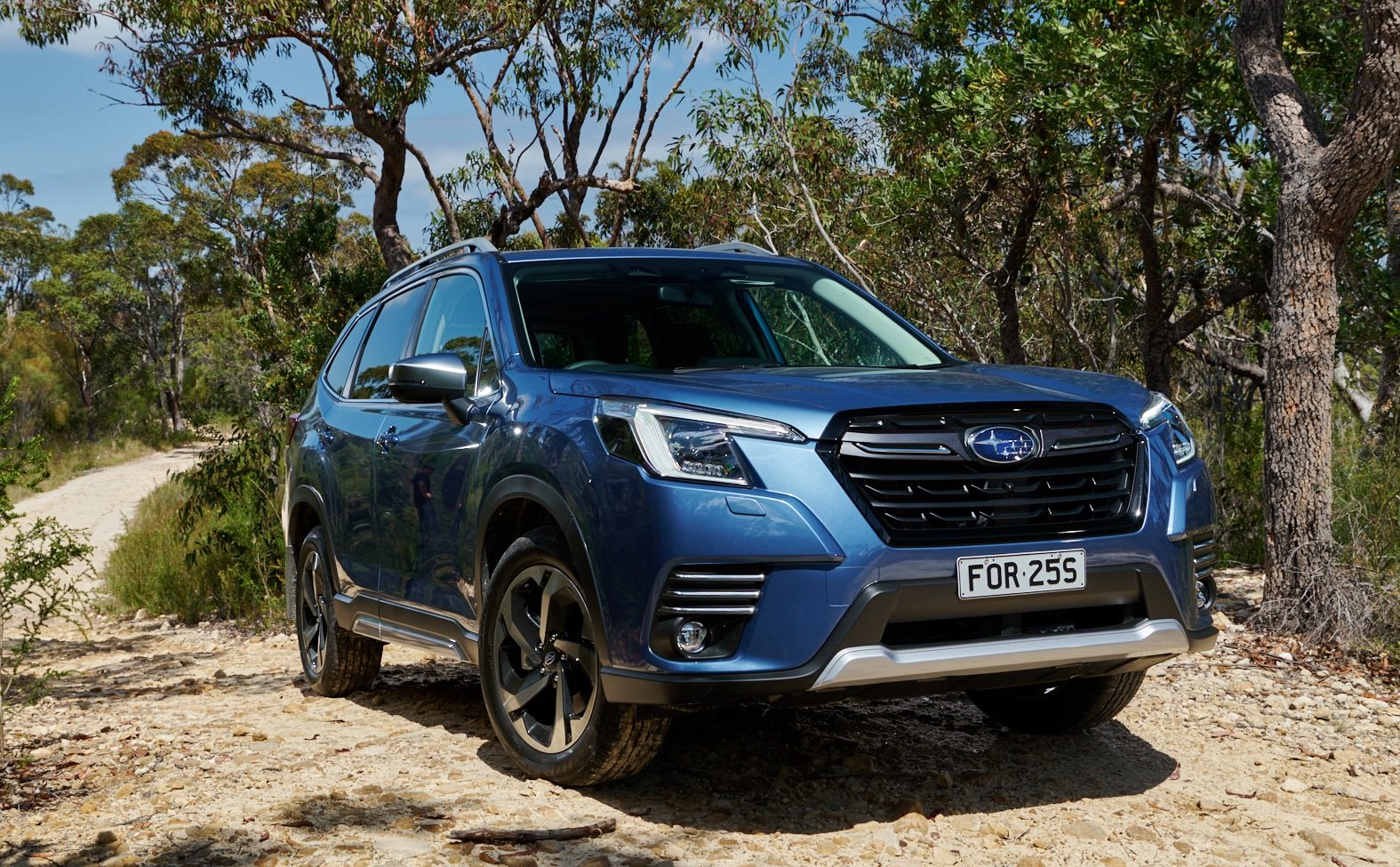Hyundai Tucson review and buyer's guide
Hyundai Tucson looks futuristic and drives very nicely on Australian roads. It offers economical, reliable engines, loads of features and 5-seat practicality at a modest price that makes it an ideal, safe and good-value family SUV.
The Hyundai Tucson is a mid-size SUV with a decent choice between model grade features, engines and driveline - including hybrid - which makes it very appealing.
If you want to make an informed choice shopping for your new midsize SUV, starting with the Hyundai Tucson is a good idea because it has a wide breadth of capability, powertrains that are proven reliable and plenty of the latest equipment.
Shopping in this market segment, you’ll be considering the Subaru Forester, the Kia Sportage, Mazda CX-5, Mitsubishi Outlander and Toyota RAV4 - without forgetting the Subaru Outback - all of which are strictly five-seaters (bar Outlander which is more like a 5+2 seater). These vehicles all offer a long list of standard gear, even on their respective base models, too.
The best place to start in this endeavour is to lock in your budget, and make a priority list of the key features you think you’re going to want most in your next new car, then bullet-point what the two or three primary uses for the vehicle will be. How are you going to use the vehicle?
Will it be doing school pick-up/drop-off - and what does that driving look like? Daily city commuting - how far, what time of day, how many times per week?
Will you be doing some kind of regional travel, perhaps for your small business, or to manage clients? Will it be static in the driveway due to working from home, or will it be a daily all-purpose commuter vehicle in stop-start city traffic? Are there any frequent towing requirements, and (if so) what do they look like? Light 6X4 trailer to the tip or hardware store for supplies, or a holiday camper?
Now, establish what your secondary uses will be - shopping, trips to destination X, an expedition north or south once a year, family holiday roadtrips over long weekends - that sort of thing.
Happily, for most of these situations, there’s a version of Tucson that will be ideally suited, and which will perform quite okay in other scenarios. So let’s get cracking.
You can download the Tuscon brochure and spec sheet here >> or download the 23-page Tucson press kit: https://spaces.hightail.com/receive/Y...
If you’re content with this car (already), this report is where you can decide which model will suit you best and see how it stacks up against its direct competitors like:
Kia Sportage >> and
The Hyundai Tucson has three powertrain choices, which is a good thing because it means you have the luxury of choice.
The main advantages in this generation of Tucson is safety, interior, the hybrid powertrain and the alternative styling and performance package called ‘N-Line’.
Let’s just start by making you aware that under the body work, the Kia Sportage and Hyundai Tucson are genetically the same vehicle. They just have different skin, different facial features, different talents, and modest changes in equipment you’ll probably never spot. They both cost roughly the same, too.
They use the same engines, the same transmissions and the same running gear. But their interiors are impressively different, yet modern, engaging and highly functional without being dominated by distracting tech shoved down your throat.
You’ll have to try both in order to figure out which has the layout and idiosyncrasies you prefer. It’s like walking into a friend’s house after it’s been renovated. Same house, but you say, “I like what you’ve done with the place.”
Where they differ is in their design execution. Tucson leans more toward lay-person’s performance bus, where Sportage errs on the side of affordable luxury, kinda like a Mazda CX-5 aims to be mainstream Mercedes-Benz, and a Subaru Forester thinks it’s a My First LandCruiser (except a 12-volt battery is included).
FEATURES & PRICING
The Tucson range isn’t quite as simplified in terms of variants like it used to be, but it remains a relatively flexible, optionable mid-size SUV to suit various customer preferences.
You can have outright performance, you can have an ultra-conservative version, or you can have the works burger with extra pickles - or you can have a combination which compromises on the unnecessary and gives you the essentials with a couple of added luxuries to fit a budget.
If you’re a return Tucson buyer, there’s a three-tier line-up, but there’s no longer a diesel engine available on any model grades. It’s petrol or hybrid-petrol only, henceforth. Pricing below is driveaway, meaning it can vary state to state.
Model grades
TUCSON (base variant) | $43,500 (d/away, approx.)
2.L petrol 4-cyl, 6spd auto, FWD
OR
1.6L petrol-hybrid FWD (or AWD w/ N-Line Pack)
Key features you get:
Three drive modes (eco, normal, sport)
12.3-inch infotainment touchscreen w/ Apple CarPlay & Android Auto (cabled)
Wireless smartphone charging & multiple Bluetooth phone connectivity
Reversing camera with rear parking sensors
18-inch alloys (w/ full-size spare) & tyre pressure monitoring
Heated powered door mirrors
LED headlights, taillights, daytime running lights, side indicators, positioning lights
6 speaker stereo
4.2-inch LCD driver’s dashboard cluster (w/ digital speedo)
‘Premium’ cloth seats
4 x USB-C points, remote seatback folding (in the boot)
Wireless phone charging pad
Rear occupant alert
Smart key w push-button ignition
TUCSON (base variant) Hybrid | $47,000 (approx. d/away) | +$5000 more than petrol
+ N-Line Pack $4000
Total: $51,000 (approx. d/away)
The Tucson Tucson poverty pack offers a massive improvement over the previous model and makes a strong economically rational case for any fleet manager out there looking to scrimp on every possible dollar he or she has to spend on the company’s behalf.
TUCSON ELITE | $46,000 (approx. d/away)
2.0L naturally aspirated petrol engine (FWD only)
OR
1.6L turbo-petrol engine FWD or AWD (w optional N-Line Pack)
OR
1.6L hybrid-petrol in FWD or AWD (w optional N-Line Pack)
Adds key features like:
Rain-sensing wipers
‘Smart’ transmission drive mode program
Paddleshifters - on AWD models only i.e. 1.6 turbo w/ DCT
AWD locking mode
Dual-zone climate control w/ air diffuser mode
Rear privacy glass, cargo net
Advanced rear occupant alert
18-inch alloys
Leather seats & steering wheel
Heated front seats & steering wheel
Electric adjustment driver’s seat
Front parking sensors
Satnav w/ live traffic & DAB+ digital radio
Smart powered tailgate
Steering column transmission stalk (shift-by-wire) - 1.6 turbo w/ DCT or hybrid
ELITE Hybrid: $55,700 (approx. driveaway)
+ N-Line Pack $2200
Total: $57,900 (approx. driveaway)
TUCSON PREMIUM ($60,700)
1.6L turbo-petrol
OR
1.6L hybrid-petrol
Key features added:
19-inch alloys
10.25-inch LCD drivers dashboard cluster
Panoramic glass sunroof
Projector LED headlights, LED rear combination taillights, LED ambient cabin lighting
Cooled (ventilated) front seats w/ & heated rear outboard seats
Bose premium audio system, incl. 8 speakers w/ external amplifier
Auto high beam assist
Parking collision-avoidance assist (reverse)
360-degree camera
Blind-spot view monitor (activates in driver’s display)
Electro-chromatic rearview mirror
Powered 8-way adjustable front passenger seat w/ walk-in driver’s control switch
Driver seat memory
PREMIUM Hybrid: $65,700 (approx. driveaway)
+ N-Line Pack $800
Total: $66,500 (approx. driveaway)
N-Line
N-LINE Option Pack adds a maximum $3200 or minimum $800 depending on the model grade you stick it on, and your state’s on-road costs etc. The pack gives you:
19-inch N-Line alloy wheels
N Line exterior body kit
LED headlights and taillights (if not already available on donor variant)
Gloss Black grille with hidden DRLs
Silver-painted N Line skid plates
A 10.25-inch LCD instrument cluster display (if choosing ‘Elite’ or ‘Tucson Tucson’ model grades)
Leather and suede upholstery
N Line steering wheel
N Line badging
There’s no power increases or weight-saving with the N-Line pack, just to be frank. It’s more like mascara and Nike trainers. While you go get the punchy, aggressive 1.6 turbo-petrol engine option with the Elite and Highlander to correspond with the N-Line, you have to add-on both to make it a notionally better car than it is in ordinary trim.
Elite starts at $48,670 + $3600 for the N-Line pack + $4200 for the 1.6 = $50,000 total. But in doing so, the N-Line pack makes it 7 per cent heavier than a regular 1.6 Elite - it adds 117 kilograms and the power-to-weight drops from 79kW/t to 77.
And hey, there’s nothing wrong with bling. If you want the snazzy, sexy N-Line pack on your kid-mobile, go for it. You won’t ruin the visual effect, unlike some aesthetically challenging body styling enhancements. Enhancements are an endless source of inspiration for many people.
The new N-Line option pack on Tucson is going to cost you incrementally more money as you go up the range, but you can have the pack on any model in the range, which is nice.
So you can have a base Tucson ‘Tucson’ N-Line, or a mid-range ‘Elite’ N-Line, or a top-shelf ‘Highlander’ N-line.
For example, this is good if you want the sporty version but can’t afford all the toys - or if you want some of the toys but not the expensive, heavy ones like a sunroof, but you do still want the sporty package.
The N-Line pack is $4000 on Tucson Tucson, it’s $2000 on each respective powertrain on Tucson Elite, and you’ll pay $1000 on each Highlander grade, be it 2.0 petrol FWD, the 1.6 turbo-petrol AWD, or the 1.6 petrol-hybrid. Same deal on Elite.
The 2.0 diesel AWD is no longer an option. Unfortunately for some, there is no manual transmission available on Tucson either.
More on N-Line below…
I'll help you save thousands on a new Hyundai Tucson here
Just fill in this form.
No more car dealership rip-offs
Greater transparency
Less stress
ENGINE
Just for disambiguation, the hybrid is the premium engine in the Tucson range now. You also have the choice of either the rather dull 2.0-litre or 1.6 turbocharged petrol engines, or the 1.6 (still with turbocharging and petrol) but with a hybrid battery and motor system added on.
Fortunately the hybrid 1.6 makes 170kW to make it the premium engine not just in cost terms, but in output.
The crackling 1.6 is the performance engine with direct injection, forced induction (turbocharging) and a slick-shifting seven-speed dual-clutch transmission using a dry clutch. The 1.6 makes peak power of 132kW at 5500 RPM, which is 28 per cent less than the 170kW available at 5000 RPM in the Mazda CX-5 Akera.
The 2.0-litre petrol engine is naturally aspirated and uses multi-point injection for 115 peak kW at 6200 RPM, which is average performance, ideal for anybody not remotely interested in how quickly their vehicle can move forward.
Depending on the variant you choose, the diesel and 1.6 will add several thousand more to the price.
On Elite, you’re looking at the 2.0L petrol (total $50,000 driveaway), or an extra $4168 (roughly) choosing the 1.6 over the 2.0L, making it more like $47,900 driveaway.
On the $60,000 Highlander (2.0L), it’s another $4150 stepping up to the 1.6.
The base Tucson Tucson only comes with the underwhelming 2.0L petrol.
But just to be clear, if you’re a thrifty shopper who can spot value in the fine print, and you can smell a bargain at 10 clicks, you’ll see that a base or Elite Tucson with the 2.0L engine comes with a large degree of practicality usability and standard features, but at a substantial saving.
It just lacks the punch of the 1.6 and the economy of the 1.6 hybrid in stop-start commuter traffic.
The hybrid Tucson will also be the better option over the petrol-only version, especially if towing box trailers and light campers, or doing plenty of regional driving with everybody on board and a bunch of heavy gear. If this is your family’s thing, get the hybrid to assist with those more consumptive driving situations.
Also, if you do lots of long trips, or take extended drives on a routine basis, perhaps to visit loved ones or for school holidays, then the hybrid will be the one to get in place of the old diesel, but only because when you do stop at lights and pootle around in town and accelerate hard entering the freeway or overtaking, the battery will kick in to assist. But it will be a few grand more than the petrol.
So if you’re budget-focused, you’ll be quite fine with the mediocre 2.0-litre petrol, or the potent 1.6 DCT combo if enthusiastic driving is your thing. But the hybrid is ideal for city driving where you’ll just better leverage its benefits if you’re in stop-start traffic and generally putting plenty of kinetic energy recovery from the brakes back into the battery.
If you’re looking at the hybrid Tucson, it’s worth also trying the Sportage diesel while you still can, and seeing which you prefer the layout and integration of, because they’re both very similar on driving and performance characteristics at a price point slightly favouring the Sportage for now.
Having said all this, consider getting the AWD in whichever form you choose your Tucson because it is a much better driveline to use in heavy rain, on gravel roads and/or if you’re loaded up.
TRANSMISSION
At this stage, Mazda doesn’t have a dual-clutch transmission in CX-5, but it might when the new one arrives in the next couple of years. So this will be a key aspect of your Tucson test drive, to determine which you like best: the DCT or normal auto. In order to help you decide, there are ample resources (listed below) to help you figure out which drivetrain is going to suit your driving requirements.
Tucson gets the DCT with the 1.6 turbo-petrol engine, regardless of whether you opt for front-wheel drive or all-wheel drive.
The FWD-only 2-litre petrol engine gets a normal epicyclic 6-speed automatic transmission, as does the 1.6 hybrid whether you go for the FWD or AWD.
Hyundai’s DCT reliability and capability has proven quite good in-service (torture tested in old Hyundai Santa Fe here >> ). But the CX-5 outguns the Hyundai 1.6 in a straight line and will be marginally better to drive in close-quarters stop-start city driving. In the Tucson you’ll want to avoid creeping forward in traffic because that’ll prematurely wear the clutch (not that you should inch forward in any vehicle when stopped). This isn’t a defect or problem, just the nuance of the dual-clutch system.
So which should you pick, the dual-clutch or the epicyclic auto?
Mazda’s epicyclic autos are quite good around town, very intuitive, rarely surge (unlike Kia’s), and very quick to change ratios with barely noticeable lag.
Certainly, Mazda has taken the conventional slush box and done wonders. But it is still the old school transmission type, meaning it is always striving to reach peak power, and when it does, you have to change gear and go again.
If you’re set in your ways and still think this is the only way a transmission should operate, you’re a bit delusional because things have moved on. That said, Mazda’s auto is very good.
Hyundai/Kia’s dual-clutch system is relatively new in the context of transmission tech, but that’s not necessarily a bad thing. It shows you that Hyundai is innovating, which is what you want. You don’t want a car company doing the same tired old rubbish and selling it at a high price. You want a carmaker trying to improve, make gains, increase efficiency and find better ways to do things. That’s Hyundai and Kia - just look how good their products are today compared to 15 years ago.
In the last five years their wet clutch DCT has proven very reliable and certainly dispenses with all the reputational damage Ford’s dry-clutch PowerShift DCT did.
Hyundai’s DCT is extremely smooth and even got tested for its ultra low-RPM take-off ability and shift quality when driving the latest generation Kia Sorento. It was completely unnoticeable when it shifted from neutral to first and then to second on a steep gradient from a standstill.
Driving a dual-clutch transmission
DCTs generally don’t like being abused by inching forward in traffic, like when you’re in peak-hour, waiting for 200 sets of lights to change before it’s your turn.
Having said that, Hyundai’s DCT has a clutch with unique thermal management design which is completely independent from the rest of the transmission. This means it’s got thermal protections in place to keep it from overheating in hot, hard, stop-start driving environments.
But you can still prematurely wear out the clutch by creeping forward, as opposed to staying totally stationary until it’s time to move forward in an adequate way to fully engage the clutch. The benefit of DCTs is of course they’re about 10 per cent more fuel efficient, generally.
Normal ‘epicyclic’ auto transmissions waste lots of teeny little bits of time and fuel striving to reach peak power, in order to move you forward.
But they’re fairly gentle on clutches, provided you don’t abuse them. This is mostly because they’re only used for very brief periods (in the millisecond domain of gear changes) and they are somewhat insulated by a torque converter at low revs, like when you’re inching closer to the vehicle in front in stop-start traffic.
But the compromise here is the additional fuel consumption because the most efficient transfer of the engine’s power to the wheels is done during peak power - something an epicyclic auto never gets to enjoy long-term. They hit peak power and then change gear and do it all over again.
Also a small chunk of power is robbed from the engine during the torque converter process. This is not a design fault, it’s a nuance of that transmission in the same way a DCT has to be treated differently by making sure you stop once and stay stopped until traffic starts moving again (in order to avoid premature wear of the clutches. “Clutches”, plural because: dual-clutch.)
FUNCTIONALITY
If you live in a residential building with height restricted car parking, or perhaps you have a low-height ceiling on your townhouse garage, it’s a good idea to know how big your new Tucson is.
Length is 4630mm, width is 1865mm and height is 1665mm - it if you’re concerned about space in your garage, it’s a good idea to round these numbers up so you’re guaranteed to clear. Make length 4.4 metres, width 2 metres (so you can get out the door) and height can be 1.7 metres so you don’t smack into the height restriction barrier or the sewerage pipe.
The wheelbase of 2755mm is the same as Kia Sportage, it’s a fraction longer than the Mazda CX-5 (5mm), it’s 49mm shorter than the Mitsubishi Outlander and 65mm shorter than the Toyota RAV4. So in strict terms, the Tucson and Sportage have the most amount of legroom, but it’s a photo-finish with the CX-5 and might be noticeable comparing with the Outlander and RAV4.
Having said that, when you do climb into these five difference vehicles, the Mazda, Hyundai and Kia do feel the most spacious, whereas the Mitsubishi feels noticeably squashier and the RAV4 feels tight. Although this is a very subjective determination - a typical NBA player or Olympic weightlifter will feel more cramped than, say, an average gymnast or Oompa-Loompa.
Tucson has a full-size spare wheel underneath the completely flat boot floor which will hold 539 litres in a space uninterrupted by tethers or overly big wheelarches. There’s over a metre of space between the arches, and between the row 2 seatbacks and the boot lip.
There are two outboard pairs of ISOFix anchor points for child restraints and corresponding top tether points, as well as a third top tether anchor point in the centre of row 2.
For some weird reason there is a higher and taller-angled wheelarch on the left-hand side of the boot than the right. but generally it’s a nicely sized, practical space with no glaring obstacles to your holiday-packing success. You can stash the cargo blind under the boot floor, there are release handles to drop the rear seats from the boot, and you can remove those plastic floor panels in the rear-most side wing areas to stow tall things like pot plants.
The tailgate opens to a decent height for tall people, although it could go a bit higher if you’re over 6-foot, so duck your head a little, and the aperture itself is about in-line with the wheelarches so long, bulky square items should fit nicely through the opening and not be impeded by the rest of the boot.
SAFETY
The five-star Hyundai Tucson was rated by ANCAP in 2021 using EuroNCAP crash test data, and it was also independently rated by the Insurance Institute for Highway Safety (IIHS) the same year and given a ‘Top Safety Pick+’ award in 2022.
You can download the Tucson ANCAP report here >> and you can open the IIHS Tucson report here >>.
According to ANCAP’s analysis, it deemed the torso measurement of the driver’s dummy to be “marginal” during the frontal offset crash test where the vehicle hits at a 40 per cent overlap at 50km/h. For the force recorded by the dummy in this test as imposed by the seatbelt, ANCAP marked Tucson down two points, but overall it was still a performance good enough to pass the test.
Here’s what it looks like crashing in a Tucson:
In the similar test conducted by the IIHS, albeit in left-hand drive configuration for the North American market, there were no deductions and Tucson passes with flying colours, so to speak. It did get a minor ping for an “acceptable” degree of deflection in the torso during the side-impact test. Nothing here is any indication Tucson is some outrageously unsafe vehicle - it’s not. It’s perfectly fine.
Their only real mark-down which will be pertinent to you is the headlights in which they create “some glare” in low-beam mode. The adaptive high beams actually got a credit for their proficiency to very promptly deactivate as required during testing.
Tucson’s performance during the IIHS crash testing is not available in video unfortunately.
The problem is ANCAP’s inconsistency in how it rates and labels its rating scores. Labelling that measurement as “marginal” suggests there’s some glaring deficiency, when in fact it’s quite safe generally speaking. The vehicle scored quite well at 35 points out of 38 for adult occupant protection.
Happily, all Tucson variants get auto emergency braking and adaptive cruise control, there’s a front-centre airbag to protect heads from smacking together during a side impact crash, and ‘Safe Exit Warning’ will alert you if a door is being opened into the path of incoming traffic down either side of the vehicle.
TOWING
Towing capacity is quite decent, but the technicalities do vary between models and powertrains, just like the payload. So you need to keep track of exactly which model you have and its respective payload capacities.
Both the 2.0L and 1.6 turbo-petrol powertrains make whichever model grade capable of a braked towing maximum of 1650kg, perfectly equal with Mitsubishi Outlander. But that’s with 100kg of towball download on the standard towbar, however the Hyundai Load Assist Kit bumps that up to 160kg.
Hyundai says the 1.6 hybrid can tow up to a maximum braked capacity of 1900kg - but you probably should not put 1900kg out the back with only 100kg on the towball. That’s just 5 per cent of the trailer’s weight and would be highly susceptible to trailer sway and dynamic instability. Keep the hybrid’s maximum towing to about 1500-1700kg. At least until we know what the official kerb weight is going to be (as yet unconfirmed for Australia).
The GVM is 2315kg, including 505kg of payload, and a Gross Combination Mass of 4215kg. GCM is the total permitted weight of the vehicle + trailer, so you’re aware.
So, if you’re towing 1900kg (using the load assist kit), you’ve got 505kg of payload, but you then need to subtract the weight of the towbar, your own weight, any gear you carry in the vehicle - all eating into your GVM allowance. This applies to the petrol variants as well, obviously.
With the 1.6 turbo petrol, braked towing is limited to 1650kg and 100kg on the towball, and these are the same figures on the 2.0 litre naturally aspirated petrol engine.
Payload for the 1.6 is 501 kg and 505kg for the 2.0L. But they have different GVM limits. The 1.6 can weigh a maximum of 2190kg, and the 2.0 is maxxed at 2030kg. Minus the 100kg towball download, that’s 2090kg for the 1.6 and 1930kg for the 2.0. And they have a GCM difference of 160kg, 3840kg on the 1.6 and 3680kg on the 2.0.
Minimum ground clearance [based on kerb weight] is 181mm - so that’s unladen of people and a month’s worth of shopping. If you go packing for a fortnight of holidaying with extended family, your ground clearance, as with any vehicle, will reduce.
In the off-chance you know the angle of your driveway’s approach and departure angles, or if you live on a particularly gnarly slope with an aggressive crest at street level or at the top of your driveway, the approach, departure and ramp break-over angles of Tucson are 18.3 degrees, 25.6 degrees and 17.8 degrees.
Be aware that an all-wheel drive Tucson is not anything remotely rugged enough to be considered for more than light duty soft-roading, like gravel roads, camping ground C-roads and steep driveways with bumps and potholes. But hairy gradients, boulder climbing, wash-away ruts, loose gravel tracks and muddy crossings are not the kind of territory for this or any other soft mid-size SUV.
Not only do you not have the powertrain for such undertakings, but you lack the tyres, the ride height, the suspension travel and probably also the driving experience, to be honest. This doesn’t mean you can’t go exploring in a Tucson. In fact, in diesel AWD it’s going to be much better suited than a Mitsubishi Outlander, Mazda CX-5, Toyota RAV4 or anything from ze Volkswagen mob.
But it won’t be quite as accustomed to the more challenging terrain as a Forester or Outback - but we’ll get to that in just a sec.
What you’ll probably appreciate with Tucson more than the others is the radical difference between it and the others in terms of cabin design, refinement, boldness in the styling, and the massive set of cajones the original sketch artist/s must’ve had to come up with that front and rear end - and to then execute it.
Every time you see that aggressive, sharp and downright edgy centre-door fold and crease in the bodywork, take a moment to imagine how many engineers had to think really hard about manufacturing that. From a metallurgical point of view, that stuff is really hard to do - and it’s the kind of design aptitude that puts Hyundai and Kia so far out in front of Toyota, Mazda, Subaru and Mitsubishi, all still carving out variations on the same old thing.
MAIN COMPETITORS
Hyundai Tucson is in the most competitive segment of new car sales - the medium SUV. For years this has routinely been the hardest fought and biggest volume-selling section. You could even say the medium SUV killed off the large and medium sedan.
And it’s easy to see why. You get all the benefits of big-boot practicality packaged into the go-nearly-everywhere versatility of the conventional 4WD (without the low-range off-roading hardware, of course), which improves outward vision (somewhat), makes it easier for the elderly to climb into, and doesn’t make you feel like some blue singlet wearing bogan when you take the family out for dinner or drop them off at school. (y’know, all those places where you’ll be seen in public.)
But the mid-size SUV segment is so competitive, it can break a car company’s brand if they don’t get it right. Just look at Jeep. Or Holden. Or Ford. Or Nissan (although, they still manage to sell a shitload of X-Trails, somehow.)
Shopping for a good medium-sized SUV means you need to also look at the rather sexy Mazda CX-5. But if you do have a concrete budget to stick to, test drive CX-5 last, because it’s arguably going to be the best to drive and could taint your perspective as you test drive others like the Kia Sportage, Tucson or Forester.
Kia Sportage is kinda at the same pricepoint, but it’s getting pretty old now. It was last updated in 2017 for 2018. The Mazda gets a space-saver spare and annoying auto engine stop/start. But the Sportage and Tucson both get full-size spares, as does the Subaru Forester and Outback.
Or, if you want a longer five-seater, with excellent cargo space at 522-litres (seats up) or 1801-litres (seats down), check out the new Subaru Outback >>. Outback is such a smart option if your family holidays are all about that long-haul touring thing, but you don’t want the burden of upkeeping a diesel (regular trips on the freeway) with its particulate filter exhaust system, and EGR systems. That’s actually a a worthwhile benefit of all these petrol mid-size SUVs actually in need of consideration - but we’ll get to that.
Out of the five vehicles you see here, the Mazda CX-5 is definitely the most polished to drive and to sit your fine posterior within. But it’s getting a bit old now and is due for replacement in 2023. The MZD Connect infotainment screen is often criticised, but is quite intuitive once you push past the adaptation stage to the point you never need take your eyes off the road. And Mazda’s 2.5 turbo petrol engine combination is certainly a winner from a driver’s point of view, with plenty of pep and a nicely sorted six-speed epicyclic auto that shifts quickly and smoothly - but does sap a lot of engine power (as all torque converter autos do).
Sportage probably comes in a close second, although its turbo-petrol 1.6 front-drive engine with 7-speed dual-clutch transmission lets the side down for every-day mundane driving around town - so absolutely, you want the diesel, which will also be better on fuel. Hyundai/Kia’s 2.0 diesel is a smooth, grunty and engaging engine to use, thanks to an abundance of power down low and middle revs you drive at in ordinary traffic.
Arguably, the new Outback is almost the best of the bunch when it comes to outright stowage capacity, in both cubic litres and linear measurement. It’s got 522 litres as measured officially using the universal standard, that’s 9 per cent more than Outlander (row 3 down), 2.8 per cent more than Forester, 19 per cent better than CX-5. But interestingly, Sportage has 543 litres - 3.8 per cent more than the Outback - while Tucson has 539 litres (3 per cent more).
Outback has 2000kg of towing capacity, too, which is a net benefit if you have a camper or trailer in use on a regular basis.
Of course the Subarus have a much more durable all-wheel drive system capable of some slightly trickier driving than the Tucson, however they remain very much inside the ‘soft roading’ set. Outback gets built-in roof racks and a wagon body ideal for packing long sports bags, big eskis and heavy, awkward tents. Forester has a wide boot aperture great for loading/unloading wide double prams. You need to see if either are better than Tucson, or if the Hyundai is enough for what you need it to do.
All new cars have obstacles to ownership you need to be prepared to climb over, and in these new Subarus, the giant central touchscreen might be one of them - or it could be a drawcard, depending on your subjective determination. You might find it distracting having to take your eyes off the road to adjust or use simple features. Or you might appreciate the clutter-free cabin design.
DRAWBACKS
The DIESEL’S DEMISE
If you live in regional Australia, such as a major provincial town, or even in the outer suburbs of a metropolitan city, then the diesel would’ve been a benefit to you the most, where you can do frequent long-ish trips on more open roads and freeways and benefit from the fuel economy while also keeping the EGR, PCV and DPF systems appropriately maintained.
But Hyundai has dropped the diesel in favour of their proven 1.6 hybrid which uses the low-down grunt of a battery and AC electric motor to get you moving from standstill in the same way to low-end torque from the diesel did. Then the petrol engine kicks in at about 25-30km/h depending on the demand/load (how hard you accelerate and how steep the road is).
Mazda’s 2.2 SkyActiv diesel was quite a good engine too, very thermally efficient with 147kW of peak power, but Mazda has killed off their diesel as well; Hyundai’s main rival, leaving just Sportage which is built on the same fundamental platform, with the 2-litre diesel. But that’s not long for this world either.
Transmission stalk
Depending on how you drive, you might find the steering column mounted transmission stalk confusion or clunky to operate for a few reasons.
Firstly, being behind the steering wheel might seem futuristic but anybody old enough to remember the expression “three on the tree” will note that column-shift manual transmissions went extinct after the 1970s when cars like the HZ Kingswood were replaced by the VB Commodore in the early 80s.
So in a sense, going back to a steering column transmission is foreign to almost everybody financially well-enough off to afford a Tucson these days - so it might take some adjustment to remember where it is.
Secondly, the motion you have to use to engage ‘R’ for reverse or ‘D’ for drive is potentially counter-intuitive. In Some cases being counter-intuitive can be an unexpected good thing, but when you’re trying to quickly reverse-parallel park in the city, or conduct a three-point turn, or simply get out your potentially awkward driveway on a busy peak-hour road… You don’t want a counter-intuitive transmission.

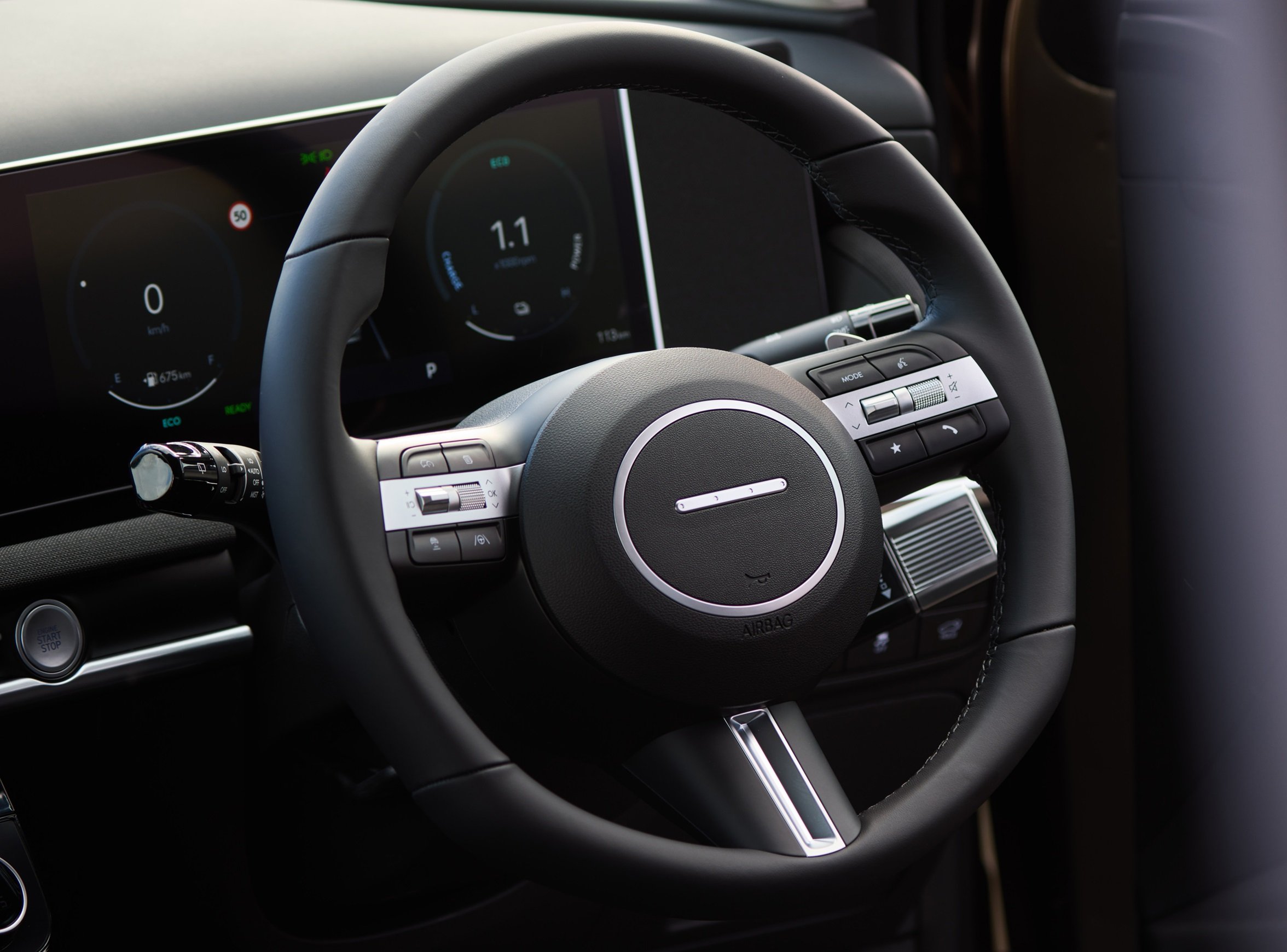
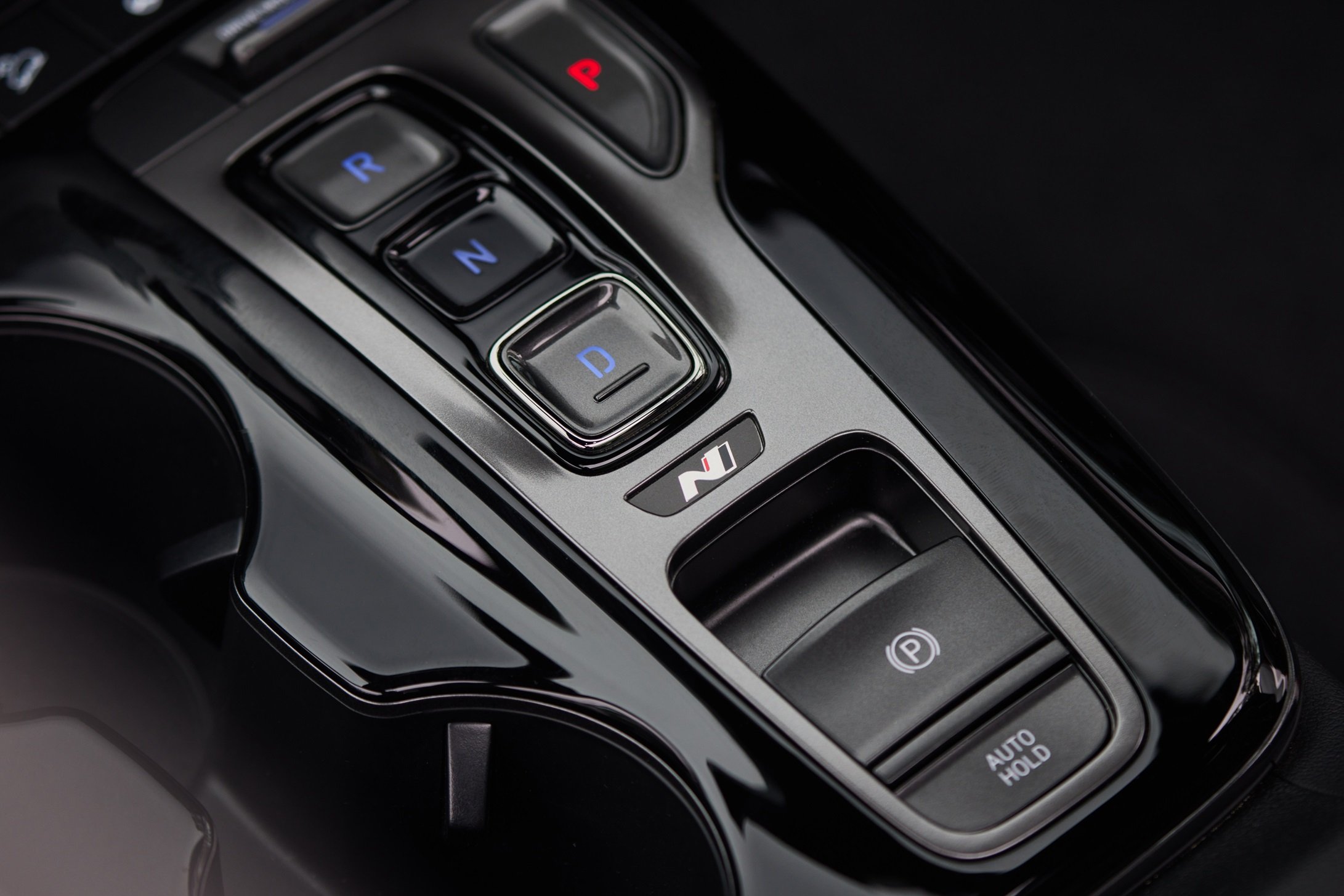
The reason for this clunkiness is that regardless of trying to select reverse or drive, you’re twisting the end of the stalk in both a forward and rearward direction. This might lead to some confusion about which way to twist the stalk under pressure, potentially without having your eyes to look down at the stalk itself for reference because you’re busy watching the traffic environment.
The third and final clunkiness aspect to the tranny-stalk is it can sometimes just be in the wrong spot depending on what you’re doing with your hands, such as using the indicator while having the wheel under full-lock. If you’re, perhaps, performing a three-point turn, or a very tight U-turn which requires shuffling back a few feet to clear an obstacle, finding a hand free to engage with the transmission stalk could become a challenge.
Best thing is to take it for a test drive and see how you go adapting to it. Everybody has to adapt to every new vehicle they buy, at least in some capacity. This might be a no-brainer for you, but it might be a brain bender for others.
CONSLUSION
If you’ve come this far - well done. You’ve made the conscious decision to take in as much information about your potential $50K-ish purchase, which is no small sum, and I’m sure you’ve busted your chops to get it.
If you need nudging in a certain direction with regards to a suggestion about which model grade you should go for, it depends on a bunch of factors aforementioned above, but let’s have a go.
If your budget is comfortably going to allow you to think about the top-spec Highlander, at least get it in the diesel if your crystal ball says occasional long drives are in your future. Holidays full of bags, kids with toys and tablets, bikes and scooters, maybe a roof rack or cargo pod of some kind. The diesel will get you the best fuel economy, it’ll emit much less CO2 than the petrols, and you get every conceivable feature you’re likely to need in your life (or theirs).
If however, you can’t entertain the full-fat option - have a good look at the Elite. In diesel, it’s going to do everything you need to it take in its stride - the big trips, it’ll handle commuter traffic just fine, you get front sensors, leather seats, auto wipers, and a bunch of ‘want’ type features in modern motoring that will all get used. As opposed to a bunch of the flashier kit in Highlander you probably won’t use as much, like panoramic sunroof, the kick-arse premium stereo and LED cabin lights.
An Elite with the 1.6 engine might feel a little sportier to some, particularly the more non-enthusiast types. But to those of you who do listen to how cars feel and handle and shift and turn-in, you might find the 1.6 trying a bit too hard to be the sports car it certainly is not. If you don’t know what it means to ‘clip and apex’, this won’t be an issue for you and the Elite 1.6 will feel like putting on a new pair of socks. But to anyone infected with the driving bug, you’ll probably appreciate the low-down power delivery of the diesel more than the paddleshifters and ‘Sport’ mode from the transmission.
Going below the Elite will leave you with the poverty pack small touchscreen, lots of plastic blanking squares and cloth seats under your wife’s caboose - and that just won’t do in some marriages. No judgement, it’s just an ontological fact. If however, you’re on a very tight budget and the hand-me-down Commodore you’ve been bear taping together for two years is finally about to take its last blink, a Tucson Tucson will be a substantial upgrade. And you’ll still get a vast majority of all the capability bundled into the diesel or the 1.6, but for roughly $20K less.
Overall, the Hyundai Tucson is a very impressive vehicle with such a wide array of modern driving criteria it ticks the boxes of. It’s safe (5 stars, tested in 2021), it’s got loads of features, it’s practical, sensible and still relatively affordable despite the industry-wide price increases on every make and model across the board.
Click the big red button below and we can help you save a few grand on your Tucson without having to arm wrestle a dealership where you’ll face professonally trained assassins, also known in the car game as salespeople.



